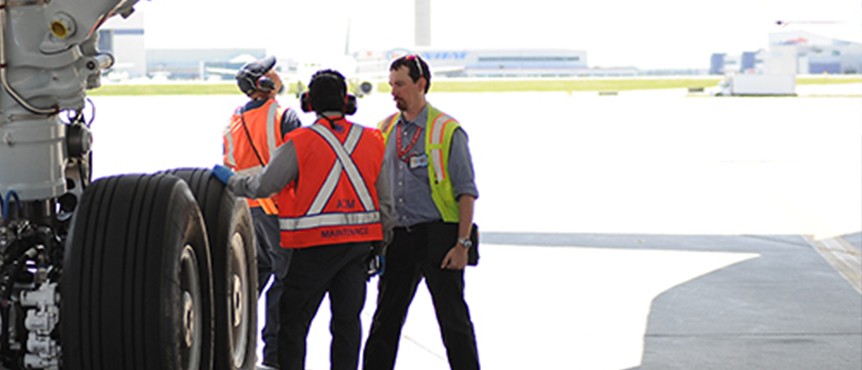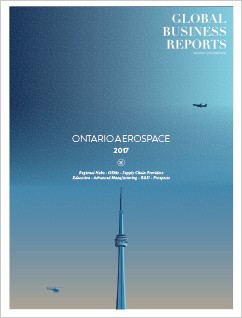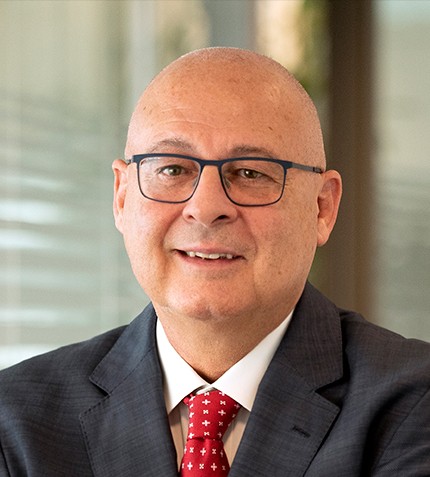Ontario controls a huge share of the world’s landing gear market and is increasing its extraordinary dominance in this sector with new investments.
RELATED PUBLICATION
ARTICLES FROM THIS PUBLICATION
Ontario: Leading in Landing Gear Systems

Aerospace has a strong legacy in Ontario, and landing gear manufacturing has over a 100-year history in the region. Ontario began producing landing gear systems in the first half of the 20th century to accommodate demand during wartime, and continued exporting them internationally throughout the second half of the century.
Landing gear systems are a crucial part of every aircraft, and one that must function each and every time. They enable the suspension of the aircraft into the air during take-off, the landing back onto the ground, as well as braking the aircraft to a halt. Landing gears are therefore expected to hold the entire weight of an aircraft, arguably making them the most complex engineering aircraft subsystems.
Ontario manufactures between 40 to 50% of the world’s commercial landing gear systems, and the region hosts four international landing gear titans: Safran Landing Systems, UTC Aerospace Systems, Héroux Devtek, and Sumitomo Precision Products Canada (SPP Canada).
Formerly Messier-Bugatti-Dowty, Safran Landing Systems has been operating in Ontario for over 70 years, and moved to their current facility in Ajax in 1949. Operating since before the Second World War, Safran continuously builds on its legacy to create expertise and sell their landing gears on major global platforms. Although Safran has worldwide operations, the deeply engrained expertise in their Ontario operations is difficult to recreate. “Ontario is the global hub for landing gear and there is a significant concentration of landing gear manufacturers here bringing a wealth of experience and capabilities,” said Deane Weatherby, vice president of North American programs for Safran Landing Systems.
UTC Aerospace Systems, formerly Goodrich Aerospace, has facilities in Oakville and Burlington with landing gear operations and MRO capabilities respectively. They produce landing gears for various aircraft, including the largest commercial aircraft in the world, the Airbus A380. UTC Aerospace System is a $14 billion industry worldwide, yet they see growth potential within their Ontario landing gear operations. “Since 1985, the site has roughly doubled in employees but tripled or quadrupled in revenue, so our labor productivity has almost doubled,” said Frank Karakas, vice president of Airbus Business Unit.
UTC Aerospace Systems draws from the highly qualified workers in the region, and stresses the importance of a people culture in operations to increase productivity.
Although Safran and UTC together make up 80% of the world’s commercial landing gear business in revenue figures, Héroux Devtek and SPP Canada are also important contenders in the market, attaining significant international contracts.
Héroux Devtek has been present in Ontario since the 1970s. Recently, it invested $50 million in a new 110,000 square foot facility in Cambridge, Ontario to accommodate larger contracts. The expansion shows a commitment to growth and development of its landing gear sector in Ontario and is an example of a company leveraging the region through capital investments. “Almost all the major players in the landing gear industry are located in Ontario, and thus there is significant competition in the market,” said Jack Curley, vice president for Central Region at Héroux Devtek.
Even though landing gear contracts are long-term, competition is strong in Ontario, and recently Héroux Devtek won the tender for Boeing 777 the contract.
Sumitomo Precision Products Canada (SPPCA) is the most recent landing gear company to enter the Canadian market. With a long heritage in Japan, SPP moved their global operations for landing gear systems into Ontario in 2012 to take advantage of the landing gear expertise and the closer proximity to American and European customers. SPPCA showcases how the landing gear industry in Ontario attracts FDI into the region. With companies such as SPP joining Ontario’s aerospace industry, the sector is diversifying its capabilities and growing the industry. “We are not competing with the major players in the market such as UTAS and Safran, who work with larger aircrafts, while our focus is mainly small to medium sized landing gears,” said Eli Brigler, CEO of SPP Canada.
The four landing gear titans are able to gain global competitive advantages by leveraging Ontario’s established supply chain and the expertise in the region. “Ontario’s supply chain has grown to support the industry, making manufacturing capacity and skills available, and allowing us to locally source items for landing gear production,” commented Tim Whittier, director of government relations at UTC Aerospace Systems.
Companies such as Nu-tech Precision Metals developed unique processes to supply titanium extrusions for landing gears. Brotech Precision CNC, Koss Aerospace, Magellan Aerospace, Noranco, Universal Precision Technology, and VAC Aero are all examples of companies feeding into landing gear companies’ supply chains. These aerospace SMEs create the necessary efficiencies in their operations, enabling the local landing gear ecosystem to reduce costs and enhance competitiveness. More companies are refocusing their manufacturing capabilities to feed into landing gear supply chains. For example, Exactatherm has identified the increased demand for landing gears, and president, Peter Lidster, said: “Since 2008, there was a tremendous push for expanding landing gear facilities here in Southern Ontario, and companies were looking for suppliers… We have now increased our capacity by between 200% and 300% in the last three years to be able to handle landing gear components, investing quite heavily in machinery and technology”.
With regards to R&D, cutting fuel costs have driven companies to invest in developing new materials for landing gears resulting in the recent trend to light weighting. Titanium is a metal with the strength of steel but only 70% of its weight, and is therefore increasingly appearing on new landing gears. Companies are also investing R&D efforts to developing composite materials for landing gear systems. For example, Safran Landing Systems produced the landing gears for the the Boeing 787-8, the first commercial landing gear to have large structural components made from a composite material, and the only aircraft flying today with composite structural landing gear components. All companies and their suppliers are looking to light weighting landing gear systems to remain competitive in the market. Landing gear systems’ design has not significantly changed, but Ontario has the ability to lead innovation, incorporating new materials and processing.
The fact that Ontario-made aerospace parts are used on virtually every commercial aircraft around the world is largely to do with the strength of landing gear systems manufacturing in Ontario. “We also need to grow and continue to leverage our strengths in landing gear manufacturing”, said Tony LaMantia, CEO of Waterloo EDC.
Ontario has the capacity to lead the world into the future of landing gear systems.
The landing gear market is projected to increase in the coming years, and it is estimated that by 2020, landing gear will become a USD$5.3 billion industry. Ontario needs to take advantage of this increased global demand and grow its aerospace capabilities from the large landing gear companies across the supply chain.











